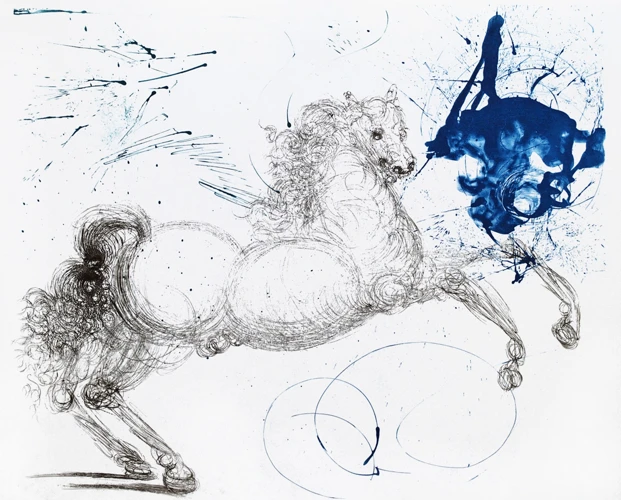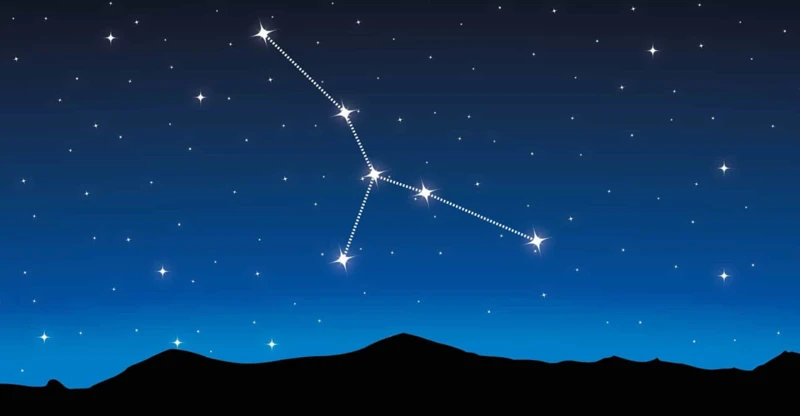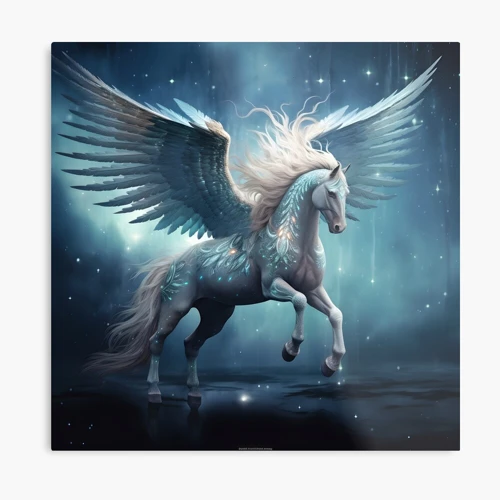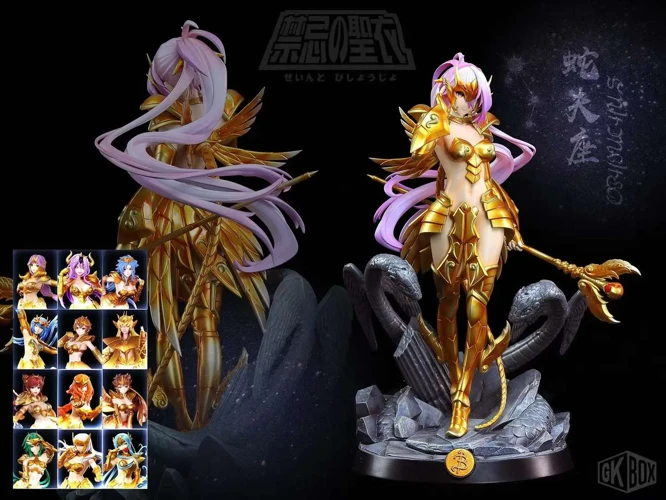The legend of Pegasus, the magnificent winged horse of Greek mythology, has captivated hearts and minds for centuries. Born from the blood of Medusa, the Gorgon with snakes for hair, and the sea god Poseidon, Pegasus emerged as a symbol of power, grace, and inspiration. This mythical creature’s story is filled with intrigue, heroism, and tragedy. From its role in the clash with Perseus to its connection with the Muses and its representation in ancient Greek art, Pegasus has left an indelible mark on culture and continues to inspire creative minds in literature, filmmaking, and even video games. Join us on a journey through the birth, symbolism, and influence of Pegasus in this exploration of one of the most beloved figures in mythology.
Contents
- The Birth of Pegasus
- The Symbolism and Powers of Pegasus
- Pegasus in Popular Culture
- Conclusion
-
Frequently Asked Questions
- Why is Pegasus considered a symbol of inspiration?
- What is the significance of Pegasus’ wings?
- How did Pegasus become associated with Perseus?
- What other creatures were born from Medusa’s blood?
- Who tamed Pegasus?
- Is Pegasus mentioned in any other mythologies?
- What is the symbolism behind Medusa’s involvement in Pegasus’ birth?
- How is Pegasus depicted in ancient Greek art?
- What is the connection between Pegasus and the night sky?
- How has Pegasus influenced modern popular culture?
- References
-
Frequently Asked Questions
- What is the origin of the myth of Pegasus?
- Who were the key characters in the birth of Pegasus?
- What is the story of Medusa?
- What was the role of Poseidon in the birth of Pegasus?
- How did Perseus clash with Pegasus?
- How is Pegasus depicted in ancient Greek art?
- What is the connection between Pegasus and the Muses?
- How does Pegasus symbolize inspiration?
- Has Pegasus appeared in literature?
- Has Pegasus made an appearance in filmmaking?
- References
- Read More
The Birth of Pegasus

According to ancient Greek mythology, Pegasus, the majestic winged horse, was born in a most extraordinary manner. Pegasus came into existence through the blood of the fearsome Gorgon, Medusa, after she was slain by the hero Perseus. Legend has it that Pegasus sprang forth from Medusa’s severed neck, along with his human brother Chrysaor. However, the story of Pegasus’ birth doesn’t end there. It was also said that the sea god Poseidon played a pivotal role. The mighty Poseidon, known as the ruler of the oceans, was enamored by Medusa and pursued her. It is believed that Poseidon was the father of both Pegasus and Chrysaor, making them divine beings with incredible powers. As Pegasus took his first flight into the skies, a new mythological icon was born, forever immortalized in the annals of ancient Greek mythology.
The Story of Medusa
In Greek mythology, the story of Medusa is a tale of tragedy and transformation. Medusa was once a beautiful maiden with golden hair, but her fate took a dark turn when she caught the attention of the sea god Poseidon. While in the temple of Athena, Medusa and Poseidon engaged in a forbidden encounter, desecrating the sacred space. Enraged by this act, Athena punished Medusa by transforming her into a monstrous creature with snakes for hair and a gaze that turned any who looked upon her into stone. Medusa became one of the three Gorgons, terrifying creatures that served as guardians of the underworld. Forever cursed with her monstrous form, Medusa was feared and avoided by all. It was from this unfortunate union between Medusa and Poseidon that the magnificent winged horse Pegasus and his brother Chrysaor were born. This part of Medusa’s story serves as a crucial link to the birth of Pegasus, leading to a new chapter in mythology filled with adventure and wonder.
The Role of Poseidon
In the myth of Pegasus, the role of the mighty sea god Poseidon is a crucial one. Poseidon, known as the brother of Zeus and Hades, holds dominion over the seas, storms, and earthquakes. It is believed that it was Poseidon who had a deep infatuation with the Gorgon Medusa. Despite her fearsome appearance, the sea god pursued her relentlessly. Poseidon’s desire for Medusa led to her transformation into a hideous creature with snakes for hair. In some versions of the myth, Poseidon is depicted as the father of Pegasus and Chrysaor, Medusa’s two mythical offspring. As the story goes, when Perseus slayed Medusa, Pegasus and Chrysaor sprang forth from her severed neck. This connection to Poseidon makes Pegasus a divine creature with a lineage tied to the mighty gods. Poseidon’s role in the birth of Pegasus showcases his influence in shaping the course of Greek mythology, intertwining the realms of gods and mortals in fascinating ways.
The Clash with Perseus
The clash between Pegasus and Perseus is a significant event in Greek mythology that showcases the heroic feats of both characters. Perseus, a demigod and renowned monster-slayer, embarked on a quest to kill the Gorgon Medusa, whose gaze turned any living creature into stone. Armed with a mirrored shield gifted by the goddess Athena and winged sandals from Hermes, Perseus managed to locate and decapitate Medusa. It is during this act of heroism that Pegasus was born, as the winged horse sprang forth from Medusa’s severed neck. As Pegasus took to the skies, Perseus recognized the creature’s potential and tamed him. The clash between Pegasus and Perseus, therefore, was not a battle between adversaries but a moment of destiny intertwining their lives. Pegasus became Perseus’ loyal companion, aiding him in numerous subsequent adventures. This tale of unity between two mythical figures showcases the bond between man and divine creature, emphasizing the extraordinary connection forged through extraordinary feats. To learn more about the connections and clashes in mythology, you can explore comparing Mesopotamian mythology.
The Symbolism and Powers of Pegasus

The symbolism and powers associated with Pegasus are profound and multifaceted. In ancient Greek art, the presence of a winged horse often represented a sense of divinity, power, and freedom. Pegasus was often depicted alongside the Muses, the goddesses of inspiration, further emphasizing its association with creativity and artistic expression. As a mythical creature with the ability to fly, Pegasus was also seen as a symbol of transcendence and spiritual elevation. Its wings allowed it to soar to great heights, bridging the gap between heaven and earth. Pegasus was believed to possess the power to manipulate weather and the ability to create springs of water with a single strike of its hoof. These extraordinary powers made Pegasus an emblem of strength, agility, and vitality. The enduring symbolism and mystical powers of Pegasus continue to inspire and captivate the imaginations of people across cultures and time.
Winged Horse in Ancient Greek Art
The depiction of winged horses in ancient Greek art holds a significant place in the cultural and artistic heritage of the civilization. These artistic representations showcase the captivating beauty and symbolism associated with creatures like Pegasus. In various sculptures, paintings, and pottery, the artists masterfully brought to life the graceful form of Pegasus, often portrayed with elegant wings and a muscular equine body. The presence of Pegasus in Greek art served as a symbol of divine power, freedom, and transcendence. The ancient Greeks embraced the winged horse as a subject of inspiration and revered its connection to the gods. The portrayal of Pegasus in art often demonstrated a sense of awe and respect for its mythical abilities, such as flying to the heavens or carrying lightning bolts for Zeus. These depictions of Pegasus in ancient Greek art not only served as decorative motifs but also as a means to communicate and convey the profound significance of this mythical creature to the viewers. To truly appreciate the artistry and symbolism associated with Pegasus in ancient Greek art, one must marvel at the skill and creativity of the artists who endeavored to capture the essence of this legendary winged horse.
Pegasus and the Muses
In Greek mythology, the connection between Pegasus and the Muses is one steeped in inspiration and creativity. The Muses, the nine daughters of Zeus and Mnemosyne, were the embodiments of artistic endeavors. They provided inspiration to poets, musicians, and artists, guiding them in their creative expressions. Pegasus, with his ethereal beauty and soaring flight, became closely associated with the Muses, acting as their loyal companion and muse as well. It was believed that Pegasus would visit the Muses on Mount Helicon and Mount Parnassus, where they resided, offering them his divine presence. There is a tale that states when Pegasus struck the ground with his hoof, a well of poetic inspiration would spring forth, creating a source of creative energy for the Muses and those they favored. This powerful connection between Pegasus and the Muses highlights the significance of this winged horse as a symbol of inspiration and artistic expression. Today, artists and creators continue to seek the spirit of Pegasus and the Muses to ignite their own imaginative pursuits, harnessing the mythical connection between horse and muse to channel their creativity in unique and captivating ways.
Pegasus as a Symbol of Inspiration
Pegasus holds a revered place as a symbol of inspiration in mythology and beyond. The image of this magnificent winged horse soaring through the skies has long been associated with the idea of transcending earthly limitations and reaching for the extraordinary. In ancient Greek art and literature, Pegasus often serves as a muse for poets, artists, and musicians, igniting their creative spark and awakening their imagination. By embodying the power of flight and freedom, Pegasus becomes a metaphor for breaking boundaries and pursuing dreams, encouraging individuals to aim higher and embrace their full potential. This symbolism has transcended time, and Pegasus remains an enduring emblem of inspiration in various forms of art and popular culture. Whether in literature, where the horse’s image has been prominently featured in works like The Iliad and Harry Potter and the Philosopher’s Stone, or in motifs depicted in paintings and sculptures, Pegasus continues to inspire individuals to unleash their creativity and soar to new heights of accomplishment. The legacy of Pegasus as a symbol of inspiration lives on, reminding us of the power of imagination, ambition, and the courage to chase our dreams.
Pegasus in Popular Culture

Pegasus, the enchanting winged horse, has not only captured the imagination of ancient Greeks but has left an indelible mark on popular culture as well. This mythical creature has appeared in various forms of artistic expression, including literature, filmmaking, and video games. In literature, Pegasus’s presence can be found in notable works such as “The Iliad” by Homer and “Percy Jackson & The Olympians” by Rick Riordan, where the horse often acts as a symbol of freedom and adventure. In the realm of filmmaking, Pegasus has graced the screen in movies like Disney’s animated classic “Hercules,” attracting audiences of all ages with his majestic presence. Additionally, Pegasus has taken flight in the realm of video games, appearing in popular titles such as “Final Fantasy” and “God of War,” adding a touch of mythology and wonder to the gaming experience. Pegasus’s enduring presence in popular culture is a testament to the enduring power of myth and the universal appeal of this legendary creature.
Pegasus in Literature
Pegasus has long been a prominent figure in literature, inspiring authors throughout history to incorporate this winged horse into their stories and poems. In Greek mythology, Pegasus served as a symbol of freedom and the unattainable, and these themes have resonated with writers of various genres. One notable example is in the epic poem “The Iliad” by the ancient Greek poet Homer, where Pegasus is mentioned as a swift and powerful companion of the gods. In later centuries, Pegasus continued to captivate literary minds. In the Renaissance play “The Faerie Queene” by Edmund Spenser, Pegasus appears as a mount for the character of the Redcrosse Knight, carrying him on his noble adventures. This portrayal reinforces the association of Pegasus with heroism and chivalry, showcasing the belief in the horse’s exceptional qualities. Pegasus makes appearances in works by renowned authors like William Shakespeare and Giovanni Boccaccio, each bringing their own interpretations and symbolism to the mythical creature. The inclusion of Pegasus in literature has allowed for a continuation of the legendary tales and has solidified Pegasus as an enduring symbol of inspiration, flight, and imagination.
Pegasus in Filmmaking
Pegasus, with its enchanting and mythical presence, has also made a significant impact in the realm of filmmaking. Countless movies and television shows have featured this iconic creature, captivating audiences with its beauty and magical abilities. From animated films to epic adventures, Pegasus has soared across the silver screen, leaving a lasting impression on viewers of all ages.
One of the most notable appearances of Pegasus in filmmaking can be found in Disney’s animated classic, “Hercules.” This film depicts Pegasus as a loyal companion and friend to the titular hero, Hercules. With his vibrant white coat and magnificent wings, Pegasus becomes an integral part of Hercules’ journey, offering support and companionship in his quest for heroism.
Pegasus has also made appearances in other fantasy films, taking on different roles and interpretations. In the movie “Clash of the Titans,” Pegasus is portrayed as a wild and untamed creature, serving as a steed for the hero Perseus. The film showcases Pegasus’ incredible speed and agility, adding an element of excitement and wonder to the story.
Additionally, Pegasus has had cameo appearances and references in various other films, showcasing its enduring popularity in the film industry. This includes movies such as “Fantasia,” “The Last Unicorn,” and “Percy Jackson & The Olympians: The Lightning Thief.”
The inclusion of Pegasus in filmmaking not only adds visual grandeur but also serves as a symbol of freedom, power, and mythological allure. Its ability to fly and its association with heroes and fantastical realms make it an irresistible choice for filmmakers looking to create captivating and awe-inspiring cinematic experiences.
Through its appearances in films, Pegasus has continued to inspire and spark the imaginations of viewers worldwide. Its iconic status in the world of filmmaking further solidifies its place as one of the most beloved mythical creatures in popular culture.
Pegasus in Video Games
Pegasus, the iconic winged horse from Greek mythology, has spread its wings and taken flight in the realm of video games. This mythical creature has captured the imagination of game developers and players alike, appearing in a variety of gaming experiences. In Greek mythology, Pegasus was known for its speed and agility, qualities that have translated seamlessly into the virtual world. Gamers can often find Pegasus as a mount or companion, allowing them to soar through expansive fantasy landscapes with grace and power. Pegasus also serves as a source of inspiration for game designers, appearing as a symbol of freedom, adventure, and mythical beings. Whether it’s in role-playing games, platformers, or even open-world adventures, Pegasus adds a touch of enchantment and brings the essence of ancient mythology into the gaming experience. With its popularity in video games, Pegasus continues to captivate players and keep the spirit of this legendary creature alive in the digital realm. So, buckle up and get ready to embark on epic quests alongside the mighty Pegasus in your favorite video games.
Conclusion

In conclusion, the mythical creature known as Pegasus has left an indelible mark on both ancient Greek culture and modern society. From its humble origins as the offspring of Medusa and Poseidon to its representation as a majestic winged horse, Pegasus embodies power, grace, and inspiration. The symbolism associated with Pegasus in ancient Greek art and its connection with the Muses highlights its significance as a source of artistic inspiration. Throughout history, Pegasus has been depicted in literature, from ancient Greek poems to contemporary novels, showcasing its enduring popularity and influence. Furthermore, Pegasus has soared onto the silver screen and into the realm of video games, captivating audiences and leaving a lasting impression. With its rich mythology and captivating imagery, Pegasus continues to captivate the imagination and serves as a reminder of the enduring power of mythical creatures. To delve deeper into the mysteries of mythology, explore the unravel connection between moon signs and emotional compatibility to uncover even more fascinating aspects of ancient lore.
Frequently Asked Questions

Why is Pegasus considered a symbol of inspiration?
Pegasus is considered a symbol of inspiration because of its association with the Muses, the goddesses of creativity and the arts in Greek mythology. Pegasus was believed to be a source of inspiration for poets, musicians, and artists, serving as a muse for their creative endeavors.
What is the significance of Pegasus’ wings?
Pegasus’ wings symbolize freedom, swiftness, and the ability to transcend earthly limitations. With its wings, Pegasus could soar through the skies and traverse great distances effortlessly, representing a sense of liberation and transcendence.
How did Pegasus become associated with Perseus?
Pegasus became associated with Perseus through their shared connection with the Gorgon Medusa. While Perseus is known for slaying Medusa, Pegasus was born from her blood. This connection led to Pegasus aiding Perseus in his quest against various foes, including the sea monster Cetus.
What other creatures were born from Medusa’s blood?
Aside from Pegasus, another creature born from Medusa’s blood was Chrysaor, Pegasus’ human brother. Chrysaor was depicted as a giant with a golden sword and is associated with the sea.
Who tamed Pegasus?
In some versions of the myth, it was the hero Bellerophon who tamed and rode Pegasus. Bellerophon used Pegasus’ help to defeat the monstrous Chimera, a fire-breathing creature with a lion’s head, a goat’s body, and a serpent’s tail.
Is Pegasus mentioned in any other mythologies?
Pegasus is primarily associated with Greek mythology, but there are similar winged horse figures in other mythologies. For example, in Mesopotamian mythology, there is the winged horse-like creature known as Anzu or Imdugud.
What is the symbolism behind Medusa’s involvement in Pegasus’ birth?
Medusa’s involvement in Pegasus’ birth symbolizes transformation and the overcoming of fear. Medusa, with her terrifying appearance, represents the monstrous and frightening aspects of life. From her blood springs forth Pegasus, a creature of beauty and grace, symbolizing the potential for growth and beauty to emerge from the darkest of circumstances.
How is Pegasus depicted in ancient Greek art?
In ancient Greek art, Pegasus is often depicted as a winged horse with a muscular body, flowing mane, and majestic wings. These representations showcased Pegasus’ strength, agility, and divine nature, emphasizing its status as a legendary creature.
What is the connection between Pegasus and the night sky?
Pegasus is said to have a connection with the night sky through its constellation, which is named after the mythical winged horse. The Pegasus constellation is visible in the northern hemisphere and has been recognized since ancient times as a prominent feature in the night sky.
How has Pegasus influenced modern popular culture?
Pegasus has had a significant influence on modern popular culture, appearing in various forms of media such as literature, filmmaking, and video games. Its representation as a majestic and magical creature continues to inspire and captivate audiences around the world.
References
Frequently Asked Questions

What is the origin of the myth of Pegasus?
The myth of Pegasus originates from Ancient Greek mythology and is believed to have been created by the ancient Greeks to explain the presence of the winged horse in their culture.
Who were the key characters in the birth of Pegasus?
The key characters in the birth of Pegasus are Medusa, a monstrous creature, and Poseidon, the Greek god of the sea.
What is the story of Medusa?
According to Greek mythology, Medusa was a beautiful woman who was transformed into a hideous monster with snakes for hair after she was cursed by the goddess Athena.
What was the role of Poseidon in the birth of Pegasus?
Poseidon, being infatuated with Medusa, approached her in the temple of Athena. They had an encounter that resulted in Medusa becoming pregnant with Pegasus.
How did Perseus clash with Pegasus?
Perseus, the hero of Greek mythology, eventually clashed with Pegasus when he was on a quest to slay Medusa. Using the reflection in his polished shield, Perseus was able to avoid looking directly at Medusa and severed her head.
How is Pegasus depicted in ancient Greek art?
In ancient Greek art, Pegasus is often depicted as a majestic winged horse with beautiful white feathers and a majestic presence. Artists would often capture its gracefulness and convey it through their sculptures and paintings.
What is the connection between Pegasus and the Muses?
Pegasus is said to have been born from the blood of Medusa when she was beheaded. It is believed that when Pegasus struck the ground with its hooves, the Hippocrene spring, which was sacred to the Muses, burst forth. This association ties Pegasus closely to the realm of inspiration.
How does Pegasus symbolize inspiration?
Pegasus is often seen as a symbol of poetic inspiration and creativity. In Greek mythology, the Muses, who were the goddesses of inspiration, were said to have ridden Pegasus to bring inspiration to artists, poets, and musicians.
Has Pegasus appeared in literature?
Yes, Pegasus has appeared in various forms of literature throughout history. It has been featured in ancient Greek plays, poems, and epic tales, as well as in modern works of fiction, including fantasy novels and children’s books.
Has Pegasus made an appearance in filmmaking?
Absolutely! Pegasus has made appearances in numerous films over the years, both in animated and live-action movies. Its mythical and majestic qualities make it a popular choice for filmmakers looking to add a touch of magic and wonder to their stories.
References
- Pegasus, the winged horse in Greek Mythology
- Pegasus | Winged Horse, Bellerophon, Chrysaor
- PEGASUS (Pegasos) – Winged Horse of Greek Mythology







